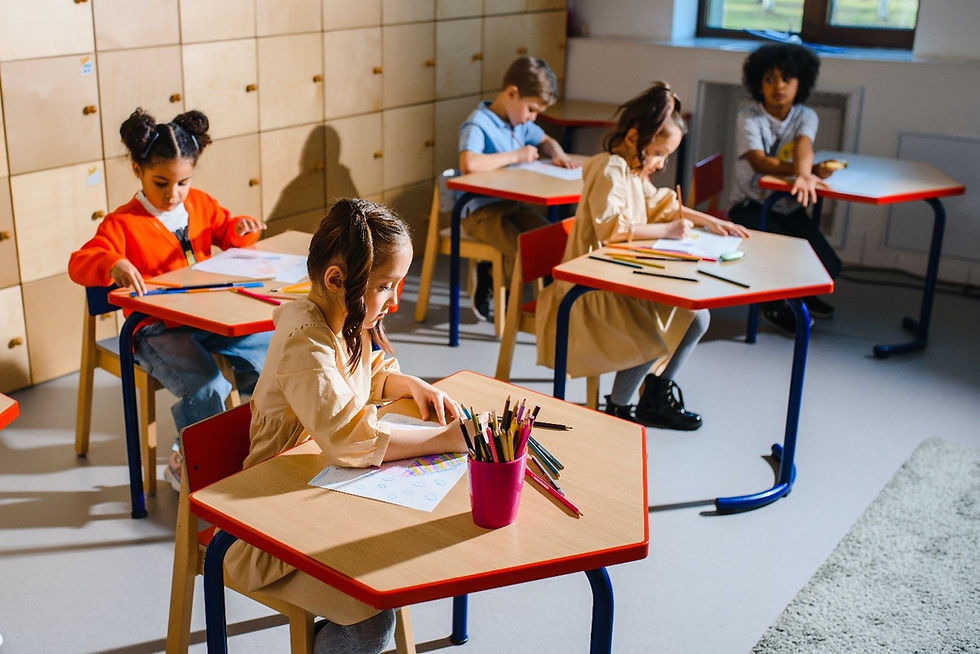Effective Classroom Management Strategies for New Teachers
- Mariam Rafique
- Jan 22, 2024
- 3 min read
Updated: Jan 23, 2024
1. Establish Clear Rules and Expectations:

Establishing clear rules and expectations is a fundamental component of effective classroom management. It sets the stage for a structured and productive learning environment. Knowing the parameters for participation boosts student engagement and fosters a more dynamic classroom experience. This clarity helps reduce confusion and minimizes disruptions. Additionally, having a well-defined set of rules and expectations promotes a sense of fairness and consistency, which is essential for building trust and a positive teacher-student relationship. By creating a transparent framework within the classroom, educators provide the necessary structure for students to thrive academically and socially, ultimately fostering a conducive atmosphere for learning and personal growth.
2. Build Positive Relationships:

It involves getting to know your students as individuals, understanding their unique personalities, strengths, and challenges. When teachers invest time in developing these connections, it creates a sense of trust and mutual respect within the classroom. This trust fosters a supportive environment where students feel valued, safe, and more willing to engage in learning. Positive teacher-student relationships also serve as a foundation for effective communication, conflict resolution, and individualized support. In essence, it's the key to not just managing behavior but also nurturing a conducive atmosphere for growth and academic success in the classroom.
3. Engage in Active Learning:

Engaging in active learning is a vital aspect of classroom management, as it directly influences students' behavior and participation. Active learning strategies involve getting students directly involved in the learning process through discussions, group activities, hands-on experiences, and problem-solving tasks. When students are actively engaged, they are less likely to become disinterested or disruptive. It not only enhances their understanding of the subject matter but also helps maintain their focus and enthusiasm for learning. Active learning strategies can be tailored to the specific needs and interests of students, making them an effective tool for classroom management and creating an environment where students are motivated to participate and behave positively.
4. Use Effective Communication:

Effective communication is a cornerstone of successful classroom management. It involves clear and concise two-way communication between the teacher and students. To manage a classroom effectively, teachers must ensure that their instructions, expectations, and feedback are communicated in a way that is easy for students to understand. Active listening is equally important, as it allows teachers to comprehend students' needs, concerns, and perspectives. Effective communication also extends to addressing behavioral issues promptly and constructively, emphasizing positive reinforcement, and providing consistent feedback on students' progress. By fostering an environment of open and effective communication, teachers can create a harmonious classroom that promotes cooperation, trust, and a culture of learning.
5. Adapt and Reflect:

Adaptation and reflection are key elements in effective classroom management. Teaching is a dynamic process, and what works well for one group of students may not be as effective for another. Therefore, it's important for teachers to be flexible and open to adapting their strategies based on the unique needs and dynamics of each class. Regular reflection on what is and isn't working is crucial for improvement. New teachers should be willing to seek feedback from mentors and colleagues and to self-assess their own teaching practices. This continuous improvement mindset allows educators to fine-tune their classroom management techniques, making them more effective over time. Adapting and reflecting also involve making necessary adjustments to rules, expectations, and teaching methods as the school year progresses. This flexibility is essential for creating a positive and productive learning environment.
The tip of the iceberg! Remember, Books can nudge you outside your comfort zone and encourage you to see the world in new and unexpected ways. I suggest you a book.
Click the link to find out about the book - https://amzn.to/4827Tex



Comments